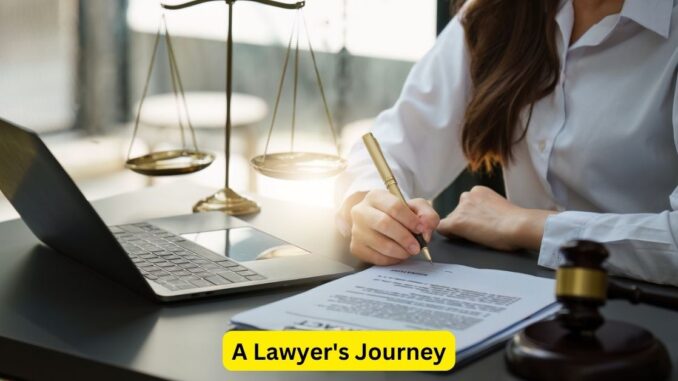
The journey of a lawyer from preparing a brief to securing a verdict is a meticulous process that requires a blend of strategic thinking, comprehensive research, and compelling advocacy. This article explores the stages of this journey, highlighting the skills and dedication involved in navigating the legal process from start to finish.
The Beginning: Preparing the Brief
The journey begins with the preparation of the legal brief, a document that outlines the lawyer’s arguments and the legal foundations supporting their case. Crafting a persuasive brief requires thorough research into relevant laws, precedents, and factual details. Lawyers must ensure that their arguments are logically structured and supported by strong evidence.
Drafting a brief is both an art and a science. It demands precision in language and clarity in presenting complex legal concepts. A well-prepared brief not only lays the groundwork for the case but also serves as a roadmap for the subsequent stages of litigation.
Building the Case: Discovery and Evidence
Once the brief is prepared, the next phase involves the discovery process. This stage is critical for gathering and exchanging information between parties. Lawyers collect documents, conduct depositions, and consult with experts to build a solid evidentiary foundation.
Effective discovery requires keen analytical skills to identify key pieces of evidence
and determine their relevance to the case. It also involves strategic decision-making to decide which information to disclose and how to leverage it to strengthen the client’s position. This phase can be lengthy and complex, but it is essential for uncovering the facts that will shape the trial strategy.
Pre-Trial Maneuvers: Motions and Negotiations
Before the trial, lawyers engage in pre-trial motions and negotiations. Pre-trial motions can include requests to dismiss the case, exclude certain evidence, or compel the other side to provide more information. These motions are critical for shaping the trial’s framework and eliminating potential hurdles.
Negotiations and settlement discussions also take place during this stage. Lawyers often strive to reach an out-of-court settlement that is favorable for their clients, avoiding the uncertainties and expenses of a trial. Effective negotiation skills are vital, as they can lead to a resolution that saves time and resources for both parties.
The Courtroom Battle: Trial Proceedings
If the case proceeds to trial, the courtroom becomes the stage where the lawyer’s advocacy skills are put to the test. This phase involves presenting opening statements, examining witnesses, introducing evidence, and making closing arguments. Each element requires meticulous preparation and a strategic approach.
Opening statements set the tone for the trial, providing an overview of the case and outlining the key points that will be proven. During witness examinations, lawyers must skillfully question their own witnesses to elicit favorable testimony and cross-examine opposing witnesses to challenge their credibility. Introducing evidence effectively is crucial for building a persuasive case.
Closing arguments offer the final opportunity to summarize the case and persuade the judge or jury. Lawyers must synthesize the evidence presented, reiterate their key arguments, and address any weaknesses or counterarguments. The ability to present a compelling narrative that resonates with the decision-makers is essential for securing a favorable verdict.
The Verdict and Beyond: Post-Trial Actions
The journey doesn’t end with the verdict. Post-trial actions may include filing appeals if the outcome is unfavorable or enforcing the judgment if it is favorable. Appeals require a thorough understanding of appellate procedures and the ability to identify legal errors that may have occurred during the trial.
Enforcing a judgment can involve additional legal steps, such as garnishing wages or seizing assets, to ensure the client receives the awarded compensation. Lawyers must remain diligent and persistent in these post-trial processes to achieve a satisfactory resolution for their clients.
Conclusion: The Lawyer’s Odyssey
From preparing a brief to securing a verdict, a lawyer’s journey is marked by dedication, strategic thinking, and skilled advocacy. Each stage of this journey demands a unique set of skills and an unwavering commitment to justice. Through meticulous preparation, effective negotiation, and persuasive courtroom performance, lawyers navigate the complexities of the legal process to achieve the best possible outcomes for their clients. This odyssey reflects the dynamic and challenging nature of the legal profession, where each case presents an opportunity to make a meaningful impact.

Leave a Reply